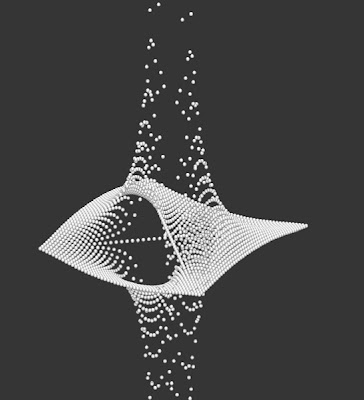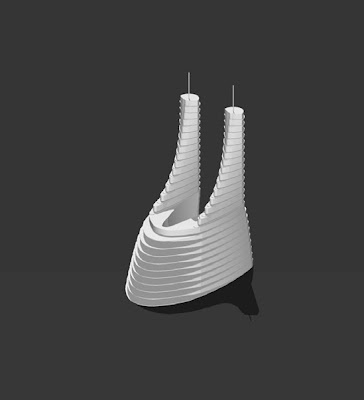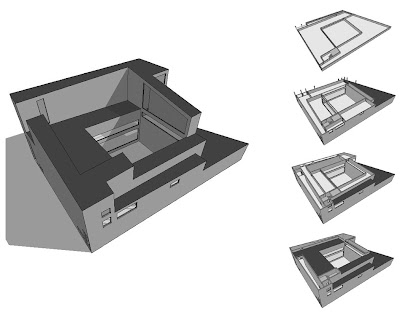1. motive:
_to build a design model
_to produce a design system
> starting with the complex, which is due response to design problems which almost always involve multiple tasks, different agents and unique problem constructing and solving processes.
> a multi-agent approach, incorporating human and non-human processes
2. assumption I:

[note: It is not our aim to define the sphere of design as a kind of language that has its syntax and grammar, or to define it with an implicit structure, or as a system of hierarchies. On the contrary, we are aiming to re-define this sphere without definite hierarchies, pre-defined structures, or systems. Therefore we use the concept of ‘family resemblances’, following Wittgenstein, in a similar vein yet differently, as indicating a possibility of a communication or collaboration between different kinds of design games. In addition, we also intend to address relations/interactions between agents that are defined together with the games that they play. There is ambiguity, uncertainty, and overlapping as well as incongruities on the borders that are _at best, artificially_ formed between the design games.]
3. about design games:
_Design games do not constitute a definite system. Rather, they are dispersed inside an infinite design universe.
_Reconstituting ‘stored’ design games is a standard behavior of the human designer (such as, a specific exploration by sketching, a singular process of creation via modeling, a study of detailing via producing scaled drawings...)
_When design activity is defined as an ever-changing universe, which has a place for every act, whether important or not, without any pre-determined hierarchy, design process can be redefined in a rather unrestricted way.
_If design, rather than being conceived as a unified act, is considered as constantly being produced by an infinite number of diversified, singular design games, then, design procedures may be freed of being conceived as inseparable parts -as absolutely stable entities- pertaining to definite stages of design, while potentialities of hitherto unnoticed acts in the process might be discovered; if not created anew. This understanding does not correspond to a state where the multi-layered progression of design process from preliminary to detailed is neglected.
_When we define design process with blurry components and indefinite stages (as with ‘free-floating’ design games), we can model design as a complex, collaborative process, where the designers’ (agents’) biological states lose importance. This means, an agent may be a person, a machine, a program, a tool, or a natural process like wind, or flood.
_This approach, may give rise to a better conception, in terms of contemporary realm of design, where human-human, human-machine, machine-machine, or process -process interactions, thus a framework of collaboration might be better defined.
4. assumption II > Creative automation:
If we start from this conception to produce a design framework, even though at the expense of major simplifications, we may obtain a model for design automation studies. First, defining a better cooperation between humans and machines may gradually give way to more ‘clever’ design tools. But there is another potential of this model: the above defined loose pattern of design games, when combined with the possibility of all the agents’ being non-humans, seems to indicate the road to ‘creative design automation’.
5. simplified and more simplified models:
[trying to emphasize the fictitious quality of understanding and model constructing:]

1. design game: the elusive basic unit of a design process (amorphous closed areas on the left, regular closed boxes on the right)
2. agent: human, wind, computer, dna... (some of the unique signs on the left, a1, a2, ai on the right)
3. tool: hammer, eye, human, computer application... (some of the unique signs on the left, t1, t2, ti on the right)
4. object: model, drawing, human, evolutionary algorithm... (on the left all is the objective flow, on the right the thin trajectories are the objects being transformed)
6. assumption III
Evolutionary strategies:
Evolution is a pertinent strategy for problem solving in this universe, so are evolutionary computation approaches.
[a story for this universe: A ‘design game’ has a becoming that involves its relationship to other design games situated on the same plane. Here design games link up with each other, support one another, coordinate their contours, articulate their respective problems, and belong to the same design process, even if they have different histories. In fact, having an infinite number of components, every design game will branch off toward other design games that are differently composed but that constitute other regions of the same plane, answer to problems that can be connected to each other, and participate in a co-creation. A design game requires not only a problem through which it recasts or replaces earlier design games but a junction of problems where it combines with other coexisting design games. (“Détournement” from Deleuze and Guattari, 1999, p18)
Design games, which have only consistency outside of any definite coordinates, freely enter into relationships of resonance, either because the components of one become ingredients of other heterogeneous components or because there is little difference of scale between them at some levels. Design games are centers of vibrations, each in itself and every one in relation to all the others. This is why they all resonate rather than cohere or correspond with each other. There is no reason why design games should cohere. As fragmentary totalities, design games are not even the pieces of a puzzle, for their irregular contours do not correspond to each other. They do form a wall, but it is a dry-stone wall, and everything is held together only along diverging lines. Even bridges from one design game to another are still junctions, or detours, which do not define any systematic whole. They are movable bridges. From this point of view, design can be seen as being in a perpetual state of digression or digressiveness. (Détournement from Deleuze and Guattari 1999, p23)]
7. fiction 1: given infinite computational power and time >
[think about the hierarchy of levels.. system 1 is a basic evolutionary strategy based on "genetic algorithms", but when you just abolish the semantic and functional borders of the items, then you can insert any item as any semantic-functional type (in this fiction we have only one item type!). items are competing to deliver their characteristics to posterior generations. but any evolutionary strategy might be a competing item itself, so it goes, if you have enough time, computing power, and credulity?]

8. fiction 2: given infinite computational power and time >
[here we have a rather more 'structured' fiction. now we have 4 functional types. items are accepted as interchangeable, this means, any item might be inserted with any of the four roles, and try as many alternatives as you can, because only a small fraction of the trials will result in meaningful solutions, and most of them will be the expected results (tautologiacl in a sense)]

9. considerations:
>>what to gain: if fed with more knowledge [give more weight to the choices and methods that are known to be effective], and conducted in a more ‘directed’ manner [do not behave as if you have no goal -like in natural evolution- but implement a goal oriented system and revise it continously], not only desired products but also primitive compounds and techniques could be obtained in a creative manner.
>>drawbacks: excessive computation, time and energy are needed to achieve these goals, and given the desired vagueness of the evolutionary structure, success is not guaranteed. [but you cannot give away the vagueness, this is what you have to keep in your system if you're dealing with architectural design]
>>to make it work:
_more (expert) human agents and intervention [start with less automized systems]
_more knowledge: human skill/knowledge + knowledge loaded tools [don't move randomly but search for several goals with the available knowledge]
_simpler systems with knowledge overload [start as simple as possible]

10. two imaginary projects:
atomic>>
_a number of atomic parameter sets as items
_a simple common-language for communication between items and administrator
_several predefined "proven techniques and strategies" (kör gözüm parmağına.. test için)
_let the system search for and learn useful techniques
semantic>>
_a number of atomic parameter sets but based on some imaginary or actual methods (how will you represent them to the system and with which language structure, a case-based semantic layer tool? a constraint based "gabari" tool? a rulebased law interpreter? a constraint based generative floor layout design tool? a virtual floor layout designer agent that can use it?...)
_a simple common-language for communication between items and administrator (use xml for it?)
_several expectations for effective techniques and strategies"
_let the system search for and learn useful techniques (but the main goal is to establish the language and communicative structure and try to define the role for possible semantic layers)






